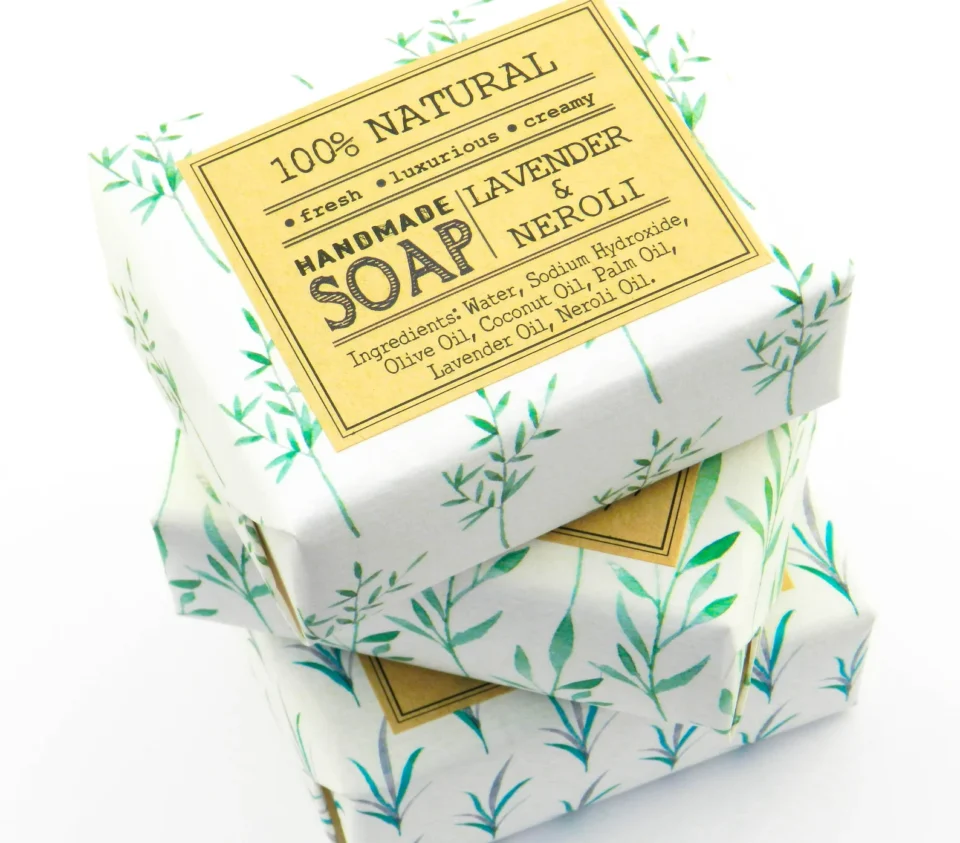In the world of handmade and commercial soap, soap labels play a crucial role. They are not just decorative elements; they provide essential information, enhance branding, and comply with regulatory requirements. Whether you’re a small artisan soap maker or a larger commercial soap manufacturer, understanding how to design effective and compliant labels is key to your product’s success.
The Importance of Soap Labels
Soap labels serve several important functions:
- Information Disclosure: They provide necessary details about the product, including ingredients, usage instructions, and expiration dates. This transparency helps customers make informed choices and ensures they are aware of any allergens or skin sensitivities.
- Brand Identity: A well-designed label reflects your brand’s personality and values. It’s an opportunity to make a memorable first impression, communicate your brand story, and stand out on crowded store shelves or online marketplaces.
- Regulatory Compliance: In many regions, there are strict regulations governing product labeling, especially for personal care items. Soap labels must adhere to these regulations to avoid legal issues and ensure consumer safety.
Key Elements of Effective Soap Labels
To create a successful soap label, consider incorporating the following elements:
- Product Name: Clearly state the name of the soap. This should be prominent and easily readable.
- Ingredients List: Include a complete list of ingredients. This is not only a regulatory requirement but also important for customers who may have allergies or preferences.
- Usage Instructions: Provide clear instructions on how to use the soap. This helps customers get the most out of your product.
- Brand Information: Include your brand name, logo, and contact information. This helps customers identify and reach out to you if needed.
- Net Weight: Indicate the weight or volume of the soap. This information is crucial for consumers to understand how much product they are purchasing.
- Expiration Date: If applicable, include an expiration date or a “best by” date. This ensures the product is used within its optimal timeframe.
- Barcode: For retail purposes, a barcode is essential for inventory management and sales tracking.
Design Tips for Soap Labels
- Choose the Right Material: The label material should be durable and resistant to moisture, especially if your soap is used in wet environments. Common materials include water-resistant paper, plastic, or vinyl.
- Select a Readable Font: Ensure that the text is legible. Use a font that matches your brand’s style but remains easy to read.
- Incorporate Attractive Graphics: Use images, patterns, or illustrations that reflect the scent, ingredients, or benefits of the soap. This can make your label more appealing and informative.
- Maintain Brand Consistency: Use colors, fonts, and designs that are consistent with your overall brand identity. This helps in building brand recognition and loyalty.
- Consider Size and Shape: The label size and shape should fit well with the packaging of your soap. It should be large enough to include all necessary information but not so large that it overwhelms the package.
Regulatory Considerations
Different regions have specific regulations for soap labels. For example:
- In the United States, the FDA regulates cosmetic labeling, which includes soap. Labels must comply with the Fair Packaging and Labeling Act (FPLA) and include accurate ingredient lists, appropriate warnings, and a clear product name.
- In the European Union, soap labeling must follow the EU Cosmetics Regulation, which requires detailed ingredient information and a product’s country of origin.
Always check local regulations to ensure your soap labels are compliant with legal requirements in your target market.
Conclusion
Effective soap labels are essential for both consumer satisfaction and regulatory compliance. By including all necessary information, maintaining brand consistency, and adhering to regulations, you can create labels that not only attract customers but also build trust and credibility. Investing time and effort into designing your labels can significantly impact your product’s success in the competitive soap market.


